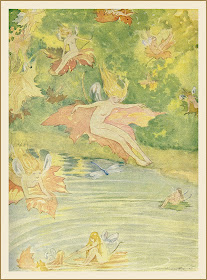
Thomas Hart Benton — Persephone — 1939
Thomas Hart Benton is a grand old fixture of the history of 20th century art. Yet Robert Hughes, venerable art critic for Time magazine, cited Benton as "a dreadful artist most of the time . . . flat-out, lapel-grabbing vulgar, incapable of touching a pictorial sensation without pumping and tarting it up to the point where the eye wants to cry uncle." Don't hold back Mr. Hughes. Benton was painting 'fine art' for museums, not 'cover art' for pulps.
One of Benton's more controversial paintings was that of Persephone, a modern allegory of Pluto, in the guise of a Missouri farmer, gazing at the sleeping goddess.
Benton's painting process was not simple, but fell into line with the practice of many painters, making thorough use of preliminary procedures:
 Above, before painting, Benton produced many graphite sketches of every element that he envisioned in the image.
Above, before painting, Benton produced many graphite sketches of every element that he envisioned in the image. Above, he took various sketches and combined them into numerous compositional studies, gridding them for transfer to painting surfaces.
Above, he took various sketches and combined them into numerous compositional studies, gridding them for transfer to painting surfaces. During the whole process, (above and below) inspired by the practice of Tintoretto, the 16th century painter, Benton worked out the spatial relationships of the figures and light and shadow by creating clay-sculpture models, that he used for further preliminary studies and the final painting.
During the whole process, (above and below) inspired by the practice of Tintoretto, the 16th century painter, Benton worked out the spatial relationships of the figures and light and shadow by creating clay-sculpture models, that he used for further preliminary studies and the final painting.

 Above, he also created black and white oil sketches to work out the rendering of tonal values.
Above, he also created black and white oil sketches to work out the rendering of tonal values. And, above, a detail of a master drawing that he gridded for transfer to a linen canvas adhered to a panel, a whopping size of 4.5 X 6 feet, combining egg tempera and oil for the final painting, shown at the top of this post.
And, above, a detail of a master drawing that he gridded for transfer to a linen canvas adhered to a panel, a whopping size of 4.5 X 6 feet, combining egg tempera and oil for the final painting, shown at the top of this post.


















































